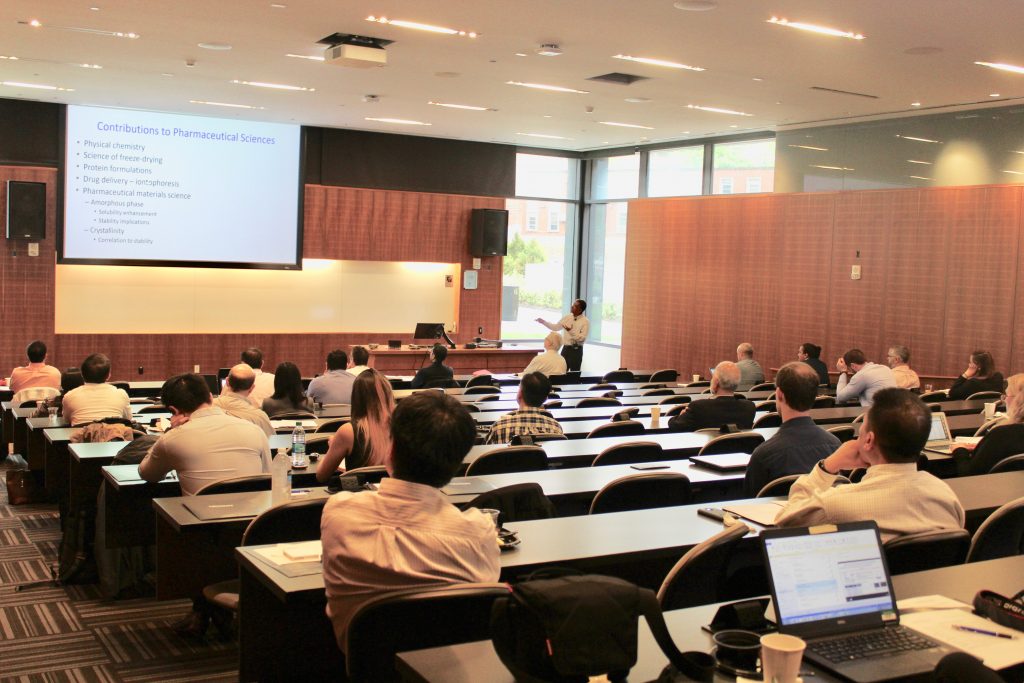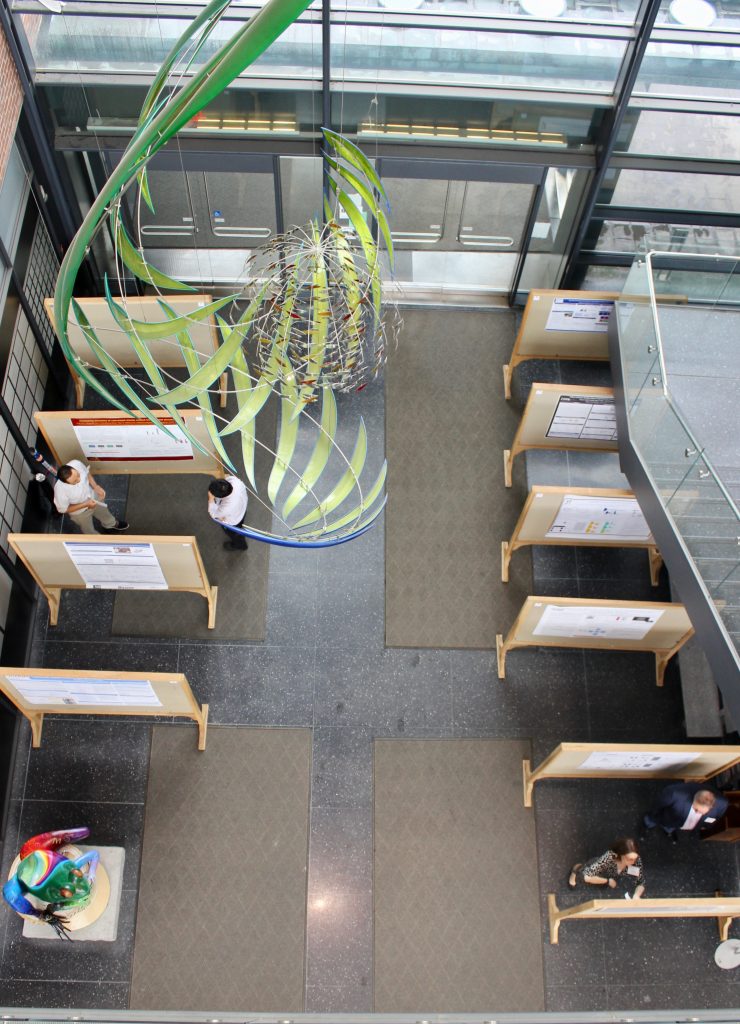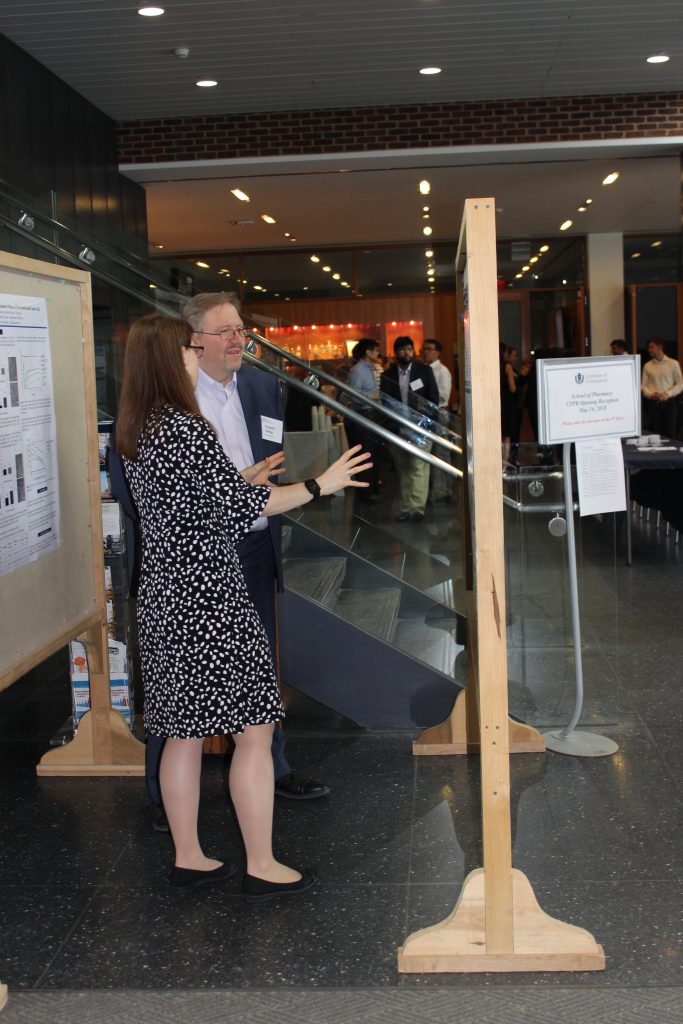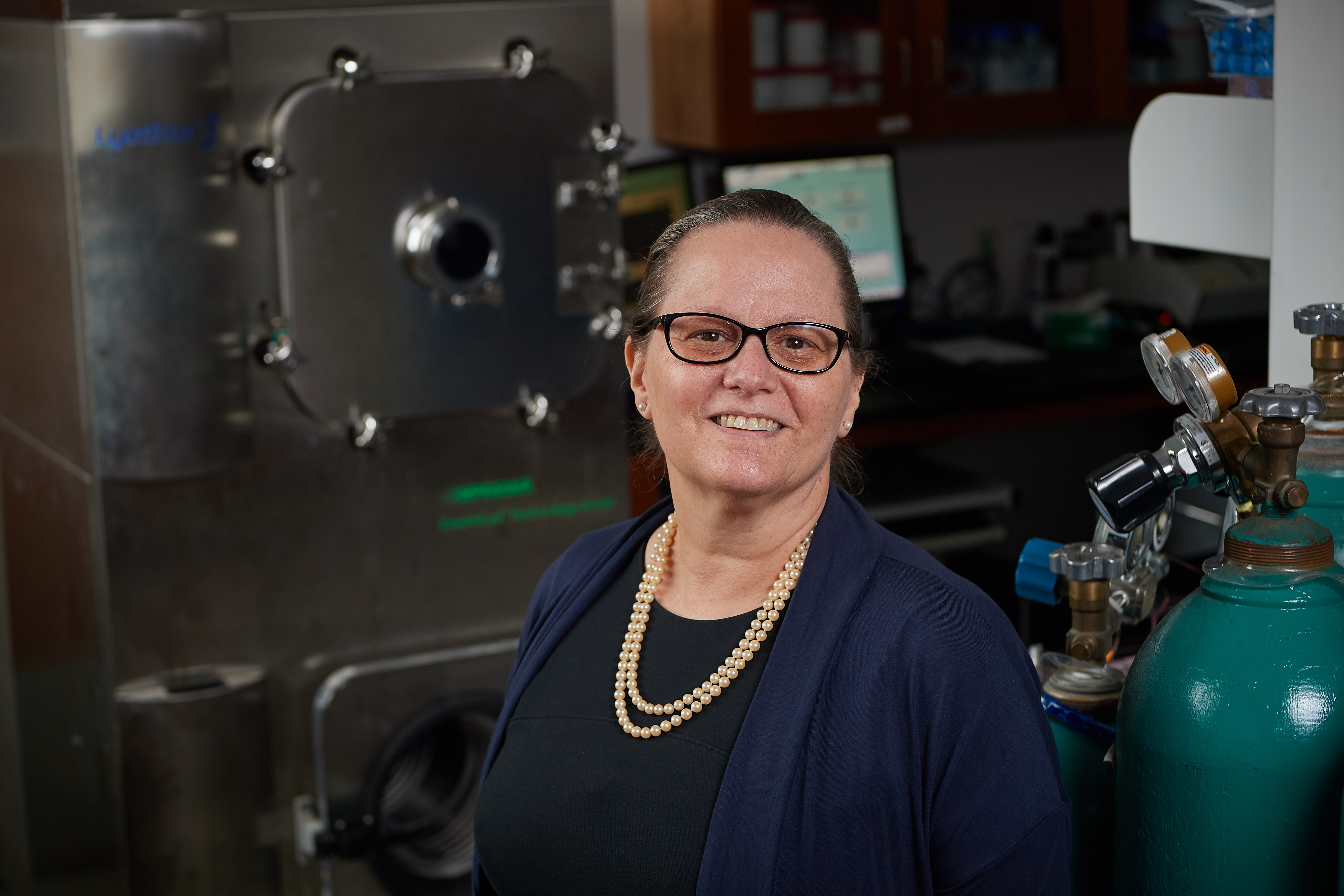The Center for Pharmaceutical Processing Research, a consortium of four universities with research strength in the field, has found a new home at UConn, beginning this month.
The CPPR, one of about 80 research centers established by the National Science Foundation (NSF) in an effort to encourage cooperative research between academia and industry, is the only such center devoted to pharmaceutical processing research. Its members are the University of Connecticut, Purdue University, University of Puerto Rico, and University of Minnesota. Previously based at Purdue, the center was launched in 1995.
The Dane O. Kildsig Center for Processing Research will be led by pharmaceutical sciences professor Robin Bogner as director and associate professor of pharmaceutical sciences Xiuling Lu as associate director.
“I am looking forward to leading this strong and productive organization,” says Bogner. “The prestige of the CPPR is evident from the number of companies who pay annually to be members, providing nearly half a million dollars in funding for fundamental pharmaceutical technology research that is industry-focused and industry-relevant.”
“This move bringing CPPR’s headquarters to UConn indicates the vigorous growth of the University and our strong ties with the pharmaceutical industry,” adds Lu.

Companies value membership in CPPR. They are able to leverage the scientific resources of the academic environment, and be the first to rapidly internalize the project outcomes within their own organizations.
At the bi-annual meetings, company representatives interact directly with top graduate students, whom they often recruit after graduation. Member companies also enjoy royalty-free licenses to patented inventions generated by CPPR research.
Bogner says one of her goals is to grow the number of member companies further.

Last spring, 25 pharmaceutical processing researchers from around the nation convened at UConn to present their work to 11 pharmaceutical companies looking to invest in new processing technologies. The researchers who received positive feedback at that event will present again this fall and learn whether or not they will receive funding.
The results from the Center’s conferences are impressive. Each year at least five projects find funding, and some find patents.
Once funded, researchers contribute their time and resources, primarily using the facilities of their universities, to conduct investigations into topics that the companies and agencies are not able to devote internal resources to, but that several companies agree to support collectively through the CPPR. In addition, university researchers often have the opportunity to explore ideas they otherwise might not be able to investigate.

“Although the focus of each meeting is to examine pre-competitive advances in the formulation and manufacturing of pharmaceutical dosage forms, the meet-ups often generate conversations about problems that are common to many in the industry,” says Bogner. “The researchers then respond to those problems with proposals that aim to understand and often mitigate the manufacturing problems.”
The most widely used CPPR-funded invention to date was developed at UConn. SMART Freeze-Drying Technology enables novices to develop efficient processing cycles to stabilize injectable medications, shortening the drug development process and bring needed medicines to patients more quickly.
Learn more about CPPR here. Instructions regarding how to get involved are noted.



